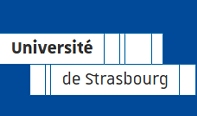Prof. Jens-Uwe Sommer "Crossing barriers: Passive transport of polymers and nano-particles through lipid bilayer membranes"
Leibniz Institute of Polymer Research Dresden, Germany
| What |
|
|---|---|
| When |
Jan 28, 2015 from 02:15 PM to 03:00 PM |
| Where | Seminarraum A, FMF, Stefan-Meier-Str. 21, Freiburg |
| Add event to calendar |
|
Lipid bilayer membranes can be considered as a barrier or trap with respect to polymer chains or nano-particles depending on their hydrophobic/hydrophilic properties. Homopolymers with a balanced hydrophobicity display a critical adsorption behavior and are able to translocate through the membrane. This has been first shown using a coarse-grained simulation method and can be rationalized by a potential model for the membrane [1]. For this potential model the state of ideal homopolymer chains are various degree of hydrophobicity can be calculated and the translocation rates can be estimated from the mean first passage time. The membrane potential has two basic components: A potential barrier/trap arising from the interaction with the hydrophobic core, and a surface component. Copolymers display a similar behavior with a major difference being the stronger adsorption by polarization effects of the membrane surfaces. Polymers with balanced hydrophobicity cause a strong perturbation of the lipid bilayer membrane which results in an enhanced permeability of solvent in the immediate environment of the adsorbed chains. This can be considered as a transient pore formation. Depending on the sequence copolymers can be either “pore formers” or “translocaters” depending on their contact time with the membrane in the adsorbed state [2]. Simulations of nano-particles display similar properties. In particular patchy nano-particles which display hydrophilic and hydrophobic components on their surface can translocate the membranes without condensing as droplets in the bulk [3]. The relation of our studies to problems in cell-biology are discussed such as to the understanding of cell-penetrating peptides.

